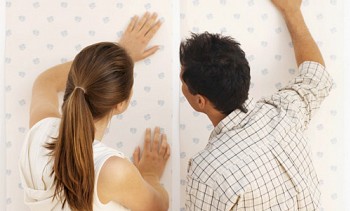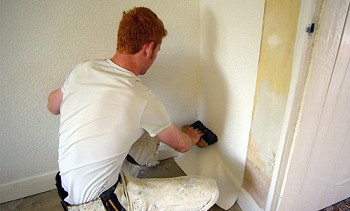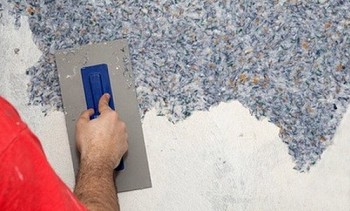How to glue wallpaper on the wallpaper and in what cases it is possible
Almost every resident of our country is familiar with the technology of wallpapering to one degree or another. But here's how to glue wallpaper on the wallpaper - this question excites many people seeking to save time and money on repair work. This story will be dedicated to our story.
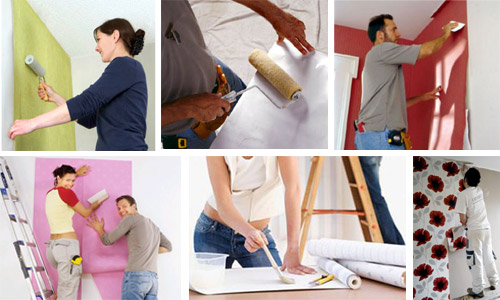
Pros and cons of wallpapering wallpaper
Among the advantages of wallpapering on wallpapers, the following should be highlighted:
- No need to work on leveling the surface;
- Some saving money and time for preparing walls.
The disadvantages of wallpapering are:
- Inability to level the walls (if necessary).
- Not always new wallpapers are glued to the old ones qualitatively.
- The operational life of the pasted wallpaper is reduced. They can simply fall off the wall.
- You will have to glue the wallpaper again even if they begin to peel off from the base in several layers.
There is a chance of air bubbles appearing on the wallpaper. Solve this problem in the following ways:
- First, you should wait for the final drying of the wallpaper. It will take about 2-3 days. In most cases, the bubbles will disappear themselves.
- Secondly, a small amount of air bubbles on the wallpaper can be removed using a hot iron.
- In the event that a positive result is not achieved and there are a lot of bubbles on the wallpaper, then the wallpaper will have to be re-glued again, while the old coating needs to be removed anyway.
Based on the foregoing, we can make a logical conclusion: wallpapering on wallpaper has many drawbacks. They all come down to one thing - in case of failure, all finishing work, including wallpapering, will have to be done in a new way. And this will lead to additional financial costs, spending personal time and effort.
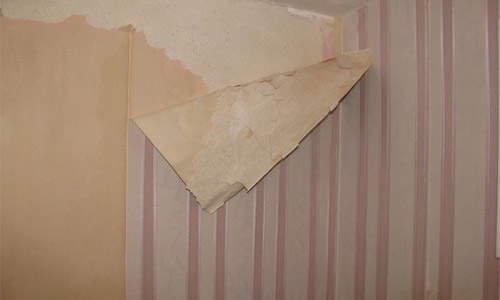
PEELING PAPER WALLPAPERS
In which cases it is permissible to glue wallpaper on the wallpaper
There are several options when you can glue new wallpaper on the old coating. In particular, it is possible when old wallpapers are thin and very well glued to the wall. At the same time, gluing new wallpaper should be done only if previously the walls were glued with paper wallpaper.
In this case, you just need to purchase high-quality glue and prepare it correctly. When gluing new wallpapers, the old finishing material will be thoroughly impregnated. Only in this way is a high-quality adhesion of the glued wallpaper to the wall surface achieved.
The main problem that will have to be faced in this case is the possible penetration of coloring components from old wallpaper to new material. The possibility of their occurrence can be determined as follows. You should take a regular sponge, moisten it and attach for a while to a small section of the wall with old wallpaper. In the event that the sponge is covered with dyes, it will be necessary to additionally treat the surface with a special sealant against stains.
If the old wallpaper was not paper, they will have to be removed.
When wallpapering is prohibited
As previously noted, old wallpapers are not always a good basis for gluing new paintings. It is definitely impossible to stick wallpapers if old wallpapers had a convex pattern. This is explained by the fact that the glue on such wallpaper will not hold, and the surface will not be even.
Vinyl and non-woven wallpapers are also not suitable as a basis for the new material. This is directly related to the properties of the vinyl film, which will not allow deep absorption of glue.And this, in turn, will lead to the detachment of wallpaper and soon they will fall from the wall.
When wallpapering, you may still encounter such a problem. If there is no air flow through the new wallpaper, necessary for the evaporation of moisture, the glue with which the old wallpaper was glued can dissolve. As a result, the wallpaper will move away from the surface of the wall.
Final tip
We made sure that despite the advantages when wallpapering wallpaper, it is still worthwhile to clean the wall of the old coating and glue them on the prepared surface. For these purposes, a special solvent is taken to remove wallpaper, added to water and applied to old wallpapers. After soaking the solution into the wallpaper, the old coating can be removed.
If the wallpaper is impregnated poorly, the solvent is applied repeatedly. Removing old wallpaper can be done using a wallpaper “tiger” (it is a small gears, using tearing wallpaper) or with a spatula.
Video: How to shoot wallpaper correctly and quickly

